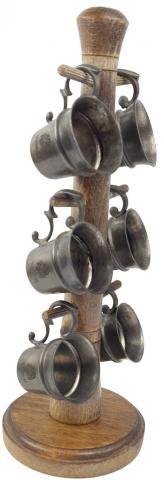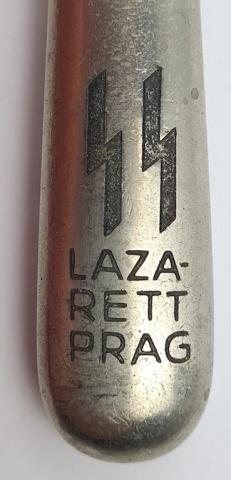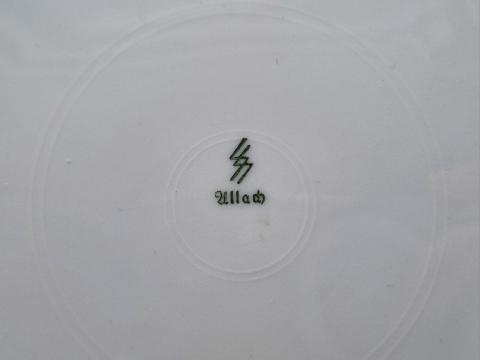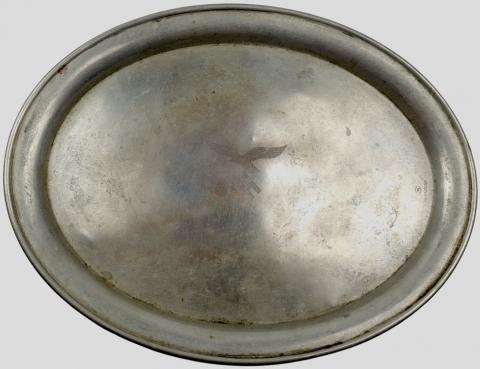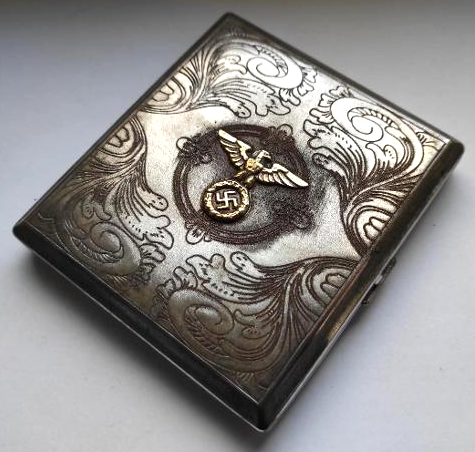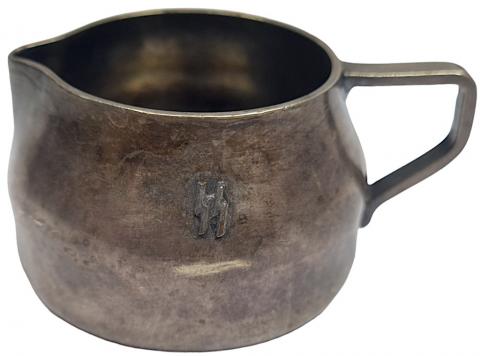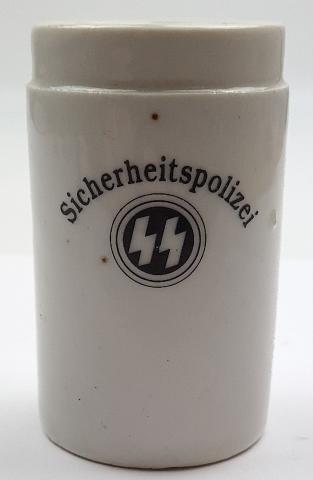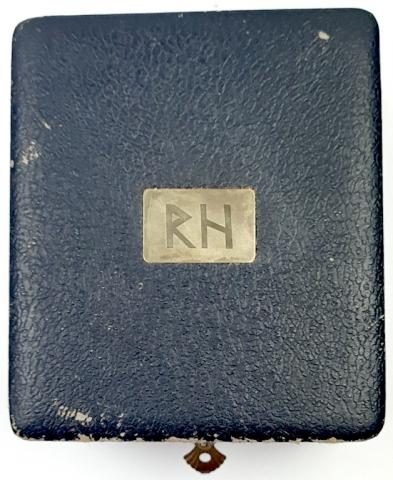WW2 German Nazi amazing Waffen SS Totenkopf division vodka cups wooden tree set
WW2 German Nazi amazing Waffen SS Totenkopf division vodka cups wooden tree set
Product
WW2 German Nazi amazing Waffen SS Totenkopf division vodka cups wooden tree set
WW2 German Nazi Waffen SS lazarett hospital in prag silverware knife
WW2 German Nazi Waffen SS lazarett hospital in prag silverware knife
Product
WW2 German Nazi Waffen SS lazarett hospital in prag silverware knife
ALLACH porcelain plate from DACHAU concentration camp Himmler Waffen SS
ALLACH porcelain plate from DACHAU concentration camp Himmler Waffen SS
Product
ALLACH porcelain plate from DACHAU concentration camp Himmler Waffen SS
WW2 German Nazi LUFTWAFFE silverware tray marked
WW2 German Nazi LUFTWAFFE silverware tray marked
Product
WW2 German Nazi LUFTWAFFE silverware tray marked
WW2 German Nazi WAFFEN SS silverware vodka cup relic found by RZM
WW2 German Nazi WAFFEN SS silverware vodka cup relic found by RZM
Product
WW2 German Nazi WAFFEN SS silverware vodka cup relic found by RZM
WW2 German Nazi Early Third Reich NSDAP high leader early silver fancy cigarette case by RZM
WW2 German Nazi Early Third Reich NSDAP high leader early silver fancy cigarette case by RZM
Product
WW2 German Nazi Early Third Reich NSDAP high leader early silver fancy cigarette case by RZM
WW2 German Nazi WAFFEN SS TOTENKOPF CAMP GUARD milk cup silverware with SS runes found in the area of STUTHOFF concentration camp
WW2 German Nazi WAFFEN SS TOTENKOPF CAMP GUARD milk cup silverware with SS runes found in the area of STUTHOFF concentration camp
Product
WW2 German Nazi WAFFEN SS TOTENKOPF CAMP GUARD milk cup silverware with SS runes found in the area of STUTHOFF concentration camp
Sicherheitspolizei Sipo pojemnik security police Waffen SS heidelager porcelain cup
Sicherheitspolizei Sipo pojemnik security police Waffen SS heidelager porcelain cup
Product
Sicherheitspolizei Sipo pojemnik security police Waffen SS heidelager porcelain cup
WAFFEN SS LEADER Reinhard Heydrich personnal belonging RARE commemorative silverware cup in case with RH monogram
WAFFEN SS LEADER Reinhard Heydrich personnal belonging RARE commemorative silverware cup in case with RH monogram
Product
WAFFEN SS LEADER Reinhard Heydrich personnal belonging RARE commemorative silverware cup in case with RH monogram
one of the best from my 25 years collection !!
directly from the collection of one of the biggest and older German Collector.
i got it from him in the 90s, he was 88 years old. He started to collect after his service in the NSDAP.
This is a gift that Heydrich got while being promute or to a birthday.
an amazing piece of history that is very unique !
Reinhard Tristan Eugen Heydrich 7 March 1904 – 4 June 1942) was a high-ranking German SS and police official during the Nazi era and a principal architect of the Holocaust. He was chief of the Reich Security Main Office (including the Gestapo, Kripo, and SD). He was also Stellvertretender Reichsprotektor (Deputy/Acting Reich-Protector) of Bohemia and Moravia. He served as president of the International Criminal Police Commission (ICPC, later known as Interpol) and chaired the January 1942 Wannsee Conference which formalised plans for the "Final Solution to the Jewish Question"—the deportation and genocide of all Jews in German-occupied Europe.
Many historians regard Heydrich as the darkest figure within the Nazi regime; Adolf Hitler described him as "the man with the iron heart".[4] He was the founding head of the Sicherheitsdienst (Security Service, SD), an intelligence organisation charged with seeking out and neutralising resistance to the Nazi Party via arrests, deportations, and murders. He helped organise Kristallnacht, a series of coordinated attacks against Jews throughout Nazi Germany and parts of Austria on 9–10 November 1938. The attacks were carried out by SA stormtroopers and civilians and presaged the Holocaust. Upon his arrival in Prague, Heydrich sought to eliminate opposition to the Nazi occupation by suppressing Czech culture and deporting and executing members of the Czech resistance. He was directly responsible for the Einsatzgruppen, the special task forces that travelled in the wake of the German armies and murdered more than two million people by mass shooting and gassing, including 1.3 million Jews.
Heydrich was mortally wounded in Prague on 27 May 1942 as a result of Operation Anthropoid. He was ambushed by a team of Czech and Slovak soldiers who had been sent by the Czechoslovak government-in-exile to kill the Reich-Protector; the team was trained by the British Special Operations Executive. Heydrich died from his injuries a week later. Nazi intelligence falsely linked the Czech and Slovak soldiers and resistance partisans to the villages of Lidice and Ležáky. Both villages were razed; the men and boys age 14 and above were shot, and most of the women and children were deported and murdered in Nazi concentration camps.

